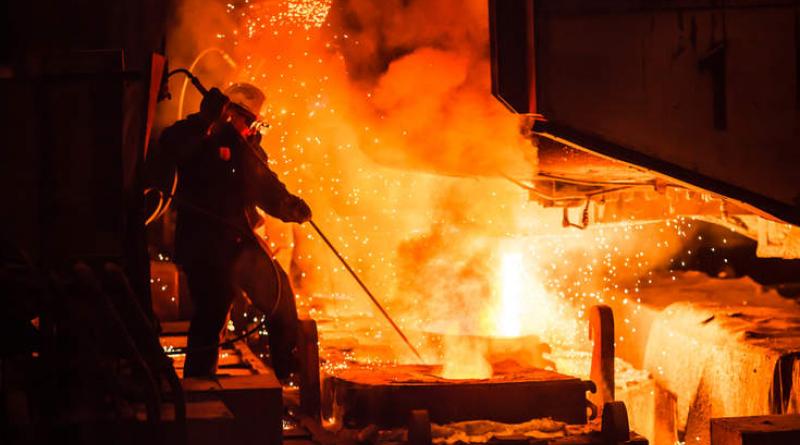Cargill, GM, P&G among group calling for market-ready renewable thermal energy.

With "100 percent renewable energy" becoming a unifying principle of the climate movement, forward-looking companies, states, power players and institutions have been reckoning with a harsh reality — electrifying everything is really hard.
Although corporate buyers are procuring record-breaking amounts of electricity generated by renewable sources such as solar and wind — more than 13 gigawatts of contracts cumulatively over the past five years — and the cost of that clean power is cheap and getting cheaper, those actions aren’t addressing the demand of a giant (and growing) energy hog: thermal loads.
That’s in large part due to the lack of market-ready renewable thermal options, according to corporate, municipal and institutional buyers. So more than a dozen organizations — including Cargill, General Motors, L’Oreal USA, Mars and the city of Philadelphia — are demanding more.
They are among the first signatories of the Renewable Thermal Buyers’ Statement, a call-to-action modeled after the Corporate Renewable Energy Buyers’ Principles that was issued about five years ago with the intent of driving more options for companies interested in buying renewable electricity.
That proclamation eventually helped catalyze the creation of the Renewable Energy Buyers Alliance (REBA). As of June, close to 80 companies had signed it, representing an annual energy demand of more than 69 million megawatt-hours.
Several of the original signers of those Buyers’ Principles — including Mars, GM and P&G — are part of the new thermal-focused initiative launched this week. This latest effort was coordinated by the Renewable Thermal Collaboration (RTC), launched by REBA in September 2017. In issuing this new statement, the group behind the Renewable Thermal Buyers' Statement seeks to communicate to innovators that there is broad base of buyers interested in market-ready, sustainable, renewable thermal technologies.
"These companies and other institutions are trying to send a signal to the marketplace; if people can produce renewable thermal technology that is cost-effective, there are buyers out there that want them," said David Gardiner, president of David Gardiner and Associates, a facilitator of the RTC, in an interview with GreenBiz.
The other RTC facilitators are the Center for Climate and Energy Solutions and World Wildlife Fund. Alongside the signers are Amy’s Kitchen, Chemours, Clif Bar, Envision Gundersen, HP, Novo Nordisk, Novozymes and the University of Maryland.
A chicken-or-egg barrier to scaling
Thermal energy — a term that refers to both industrial processes and the heating and cooling of buildings — is overwhelmingly powered from fossil fuel sources, with no real competitive renewable alternatives. It represents two-thirds of industrial energy demand, making it a significant contributor to global carbon dioxide emissions, with some estimates pegging it at 39 percent of energy-related emissions worldwide. The prevalence of fossil fuels in heating processes is in part due to the slow pace of change in the built environment, and the lack of education and technology.
The price tag of the nascent technologies is high, making demand low, leading to few innovators taking on the challenge of maturing the technology. Through publicizing the demand for more options, the signatories hope to break the cycle. The statement specifically calls for industry players to:
- Accelerate cost-effective renewable thermal technologies
- Create market approaches and instruments
- Increase market transparency
- Standardize renewable thermal energy products
- Create innovative financing and project structures
- Expand collaboration among market stakeholders
The analogy the RTC draws in its call is to renewable electricity. Five years ago, the original signers behind the Buyers’ Principles established that legitimate demand existed among large companies for cost-competitive renewable electricity options. As a result, new business models such as virtual power purchase agreements (VPPAs) and renewable energy credits (RECs) emerged. This, in turn, spurred the development of new energy assets and drove down the price for all renewable electricity off-takers.
"Biomass, biogas, solar thermal — all of these technologies have capacity to tackle thermal issues."
The hope is that a similar feedback loop will be set into motion for renewable thermal energy technology. A noticeable difference between the two, however, is that renewable thermal technology itself — not just the business model — needs to develop and standardize to scale in order to work for thermal energy.
"Solar panels work around the world, we know they work, so there’s a scalable technology there," said Peter Dahm, Cargill’s sustainability director for operations and natural resources. "That same technology doesn’t exist on the thermal side yet. This is a call to the market to say, solutions are needed. This is an opportunity for a lot of smart people out there because the reality is there is a group of buyers out here that are interested in it."
Technology to cover thermal gap exists, but is still young
Renewable thermal energy increased 17 percent between 2007 and 2014, a rate that is slower than growth for the electricity supply but that still represents forward movement. Much of the thermal energy demand goes to heating, ventilation and air conditioning (HVAC) applications, where technologies such as geothermal are expected to grow.
In industrial manufacturing, location matters. Alcoa, for example, runs operations close to cheap renewable resources to power aluminum smelting, which it says run off 70 percent renewables. However for a company such as Cargill, which has 1,000 locations globally, engineering site-specific solutions is a heavy lift.
Meanwhile, innovators are looking at new technologies. As just one example, the University of South Australia is testing a 1.5-MWh prototype that uses cheap renewables — wind and solar — to heat rocks, which are packed inside a steel tank. A fan moves the heated air. It's similar to how saunas work.
Investors are also looking at clean energy for industrial heat processing as an economic play. Sanjeev Gupta, a British billionaire, rescued Australia’s Whyalla steelworks in 2017 and committed more than $2 billion to clean energy and green steel developments, citing the fact that renewable energy is cheaper than coal. Gupta plans to power the steel plants with a 280MW solar farm, to be completed this year.
"What’s exciting about this field is there is a lot of potential out there," Gardiner said. "Biomass, biogas, solar thermal — all of these technologies have capacity to tackle thermal issues. We want to put together the mechanisms that help make it easier for buyers and suppliers to scale these technologies."
March 2019





